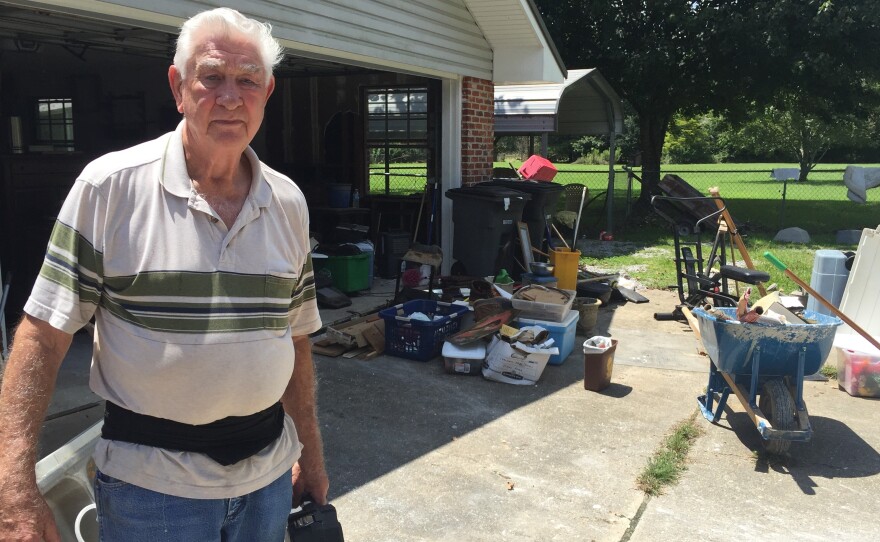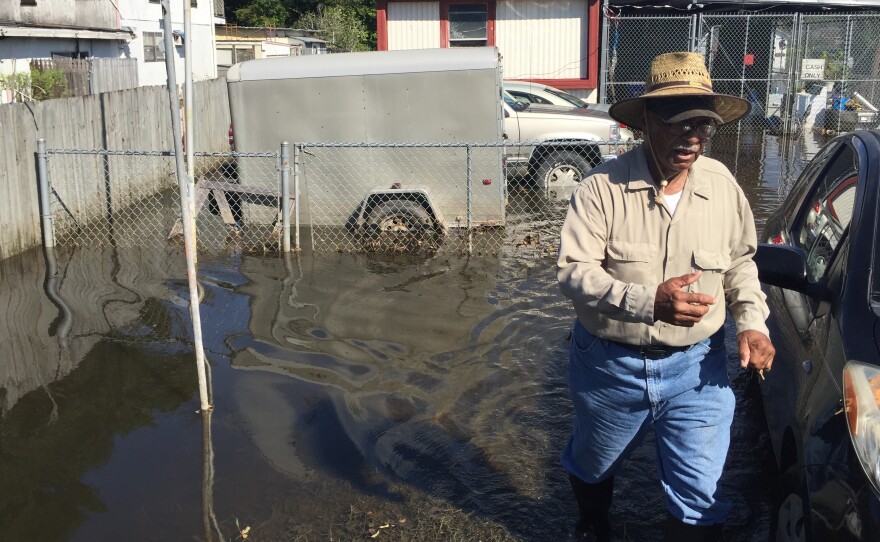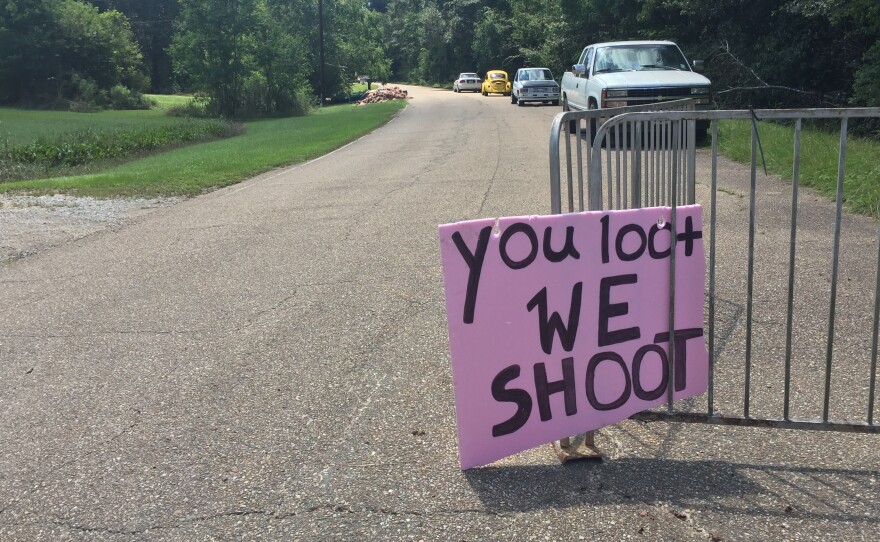

In the small flood-ravaged town of Springfield, La., Rachel Moriarity waited more than a week for a center where she could apply for emergency food stamps to finally open in the Am-Vets hall — but she's been turned away at the door.
This week they are processing only those with last names beginning with A through D.
"I don't have a vehicle to get here," she tells a staffer from the state, who replies that due to the volume of applicants in need, there isn't anything they can do.
A defeated and exhausted Moriarity sits down on one of the metal folding chairs anyway. She doesn't know if she can hold out until next week for food.
"We don't have it; it's just not there anymore," she says.
At least her husband is back to work, she says. He missed the last five days. They lost both their cars in the flood. She has a FEMA voucher for a rental. But she's been told there are no cars available for at least three weeks, and anyway the nearest place to rent one is in Alabama.
"It really is hard, I mean, you look at your neighbors and you look at all the stuff that's on the street and you don't even want to go outside," she says. "But then you can't stay inside all the time, so the depression levels are really high."
Moriarity's crisis is far from unique. In Louisiana, more than 115,000 people have now applied for aid, and at least as many homes and businesses are ruined or badly damaged. Authorities expect the numbers to keep climbing.
Along a 100-mile route across the southern part of the state, the sheer scope of loss can be overwhelming.
The narrow country highways that fan out from Springfield are lined with piles of couches and furniture ruined by floodwater. Debris from gutted mobile homes is piled at the ends of dirt driveways. On one road, a handmade sign next to some abandoned cars reads "you loot, we shoot."
About 45 miles to the northwest of Springfield, Al McGee races to get his home cleaned out and all the Sheetrock removed, before the mold takes over.
"We're tearing all the walls out, we've gotta dry it all out to the brick," he says, with fans humming in what used to be his kitchen.
McGee is 79. He's wearing a back brace. He and his wife are on a fixed income, now living with relatives. He chokes back tears when he says he doesn't know what he'd do if his son-in-law wasn't driving up here every day from New Orleans to clean and rebuild.
"He's been more than good to me," McGee says. "It means the world to me."
McGee is not expecting much help from his insurance company or the government. Like most folks in this rural neighborhood outside Baton Rouge, he has no flood insurance. Until the storm that dumped nearly two feet of water beginning Aug. 11, not a drop of water had ever entered the house in the 45 years he's lived here.
"Everything is just miserable," he says, "and then having to live in somebody else's house and you don't know where anything is."
One of the biggest problems right now is finding enough workers to gut all these homes and haul away all the debris. Now that the floodwater has receded, sanitation workers are resuming pickups, but the scope of the work is staggering. More than 50,000 homes in East Baton Rouge Parish alone are said to be affected.
And then there are the places farther to the west along Interstate 10 that are still inundated by floodwater after almost two weeks.
In Lafayette, George Alexander puts on a pair of rubber boots and wades through mucky, fouled water to check on his elderly neighbor's mobile home for the first time since they evacuated. He is surprised to find only a little bit of water damage inside. The same can't be said for his own house next door where he's lived since 1959.
"If you go in there, everything's floating," Alexander says.
The water is still chest high. Alexander says mildew has set in and everything inside is buckling. He's doubtful he'll get to move back.
But he knows he's luckier than some of his neighbors — he has flood insurance. And right now he's staying with his daughter. Hundreds more people around here are still living in shelters.
Copyright 2016 NPR. To see more, visit http://www.npr.org/.






